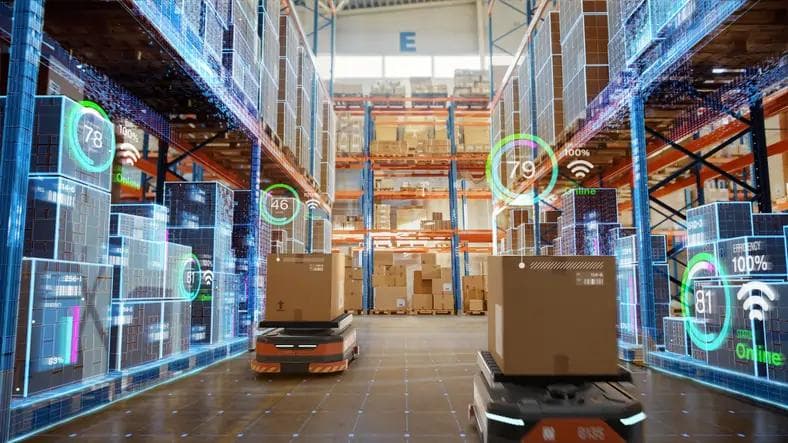The CEO Imperative: Navigating Leadership in the Age of AI
The CEO Imperative: Navigating Leadership in the Age of AI
Published by Wanda Rich
Posted on April 17, 2025

Published by Wanda Rich
Posted on April 17, 2025

Artificial intelligence is no longer on the horizon—it's integral to the operations of today's leading organizations. For CEOs, this represents a critical juncture. Leadership strategies that previously ensured success are now challenged by market demands, requiring greater agility, technological fluency, and ethical oversight.
The urgency is underscored by recent research: according to a 2025 executive report, 72% of executives plan to integrate AI into their daily operations. This decisive shift from experimental adoption to strategic integration reflects AI's potential to significantly improve decision-making, boost productivity, and cultivate an innovative organizational culture.
Yet the primary challenge CEOs face isn't technological—it's leadership-driven. In an environment defined by rapid technological evolution and uncertainty, CEOs must actively guide their organizations, positioning AI as not merely a tool but a foundational element of their strategic vision.
The Leadership Paradox
As organizations accelerate AI adoption, a surprising gap is emerging—not between technology and talent but between leadership perception and workforce readiness. According to McKinsey research, many employees already embrace AI in their day-to-day roles, experimenting with tools that enhance productivity and redefine how work gets done. Yet senior leaders often underestimate this readiness—creating a disconnect between strategic direction and operational reality.
This dynamic presents a critical leadership challenge. CEOs are tasked with driving AI transformation from the top while ensuring they are not trailing behind their teams in understanding its practical value. Delegating digital innovation solely to the CTO or CDO is no longer sufficient. Deloitte's findings show that AI initiatives are markedly more successful when CEOs take direct ownership—setting the vision, aligning resources, and embedding AI into the organization's strategic priorities.
Cultivating AI Literacy Without Becoming a Technologist
CEOs don't need to write code but need a working knowledge of AI's capabilities, limitations, and use cases. According to Harvard Business Review, "AI-first" leadership requires more than passive awareness—it demands a mindset that integrates AI into strategic thinking and decision-making. Foundational literacy empowers CEOs to ask the right questions, evaluate proposals critically, and identify where AI can drive value across the enterprise.
Redefining Human-AI Collaboration
AI is most powerful when it enhances human capabilities—not when it attempts to replace them. As research in Harvard Business Review underscores, effective leadership remains inherently human. Employees continue looking to leaders for purpose, trust, and emotional intelligence—traits no algorithm can authentically replicate. The emerging leadership model calls for CEOs to foster a culture where AI tools amplify human judgment, streamline decision-making (for example, by automating routine tasks and providing data-driven insights), and create space for deeper collaboration and creativity (for instance, by facilitating cross-functional teamwork and freeing up time for strategic thinking).
Managing the Ethics and Risk Landscape
AI's rapid advancement brings a host of risks—from biased outputs and opaque algorithms to data security concerns. A recent Fortune report found that nearly 60% of organizations cite data privacy and security as primary obstacles to broader AI deployment. CEOs must ensure that innovation is balanced by robust governance, establishing clear ethical standards and internal controls to guide AI use responsibly across business units.
The Implementation Roadmap
Translating AI ambition into enterprise-wide results requires more than vision—it demands execution. CEOs leading successful transformations take a phased, disciplined approach that balances foundational capability-building with targeted, high-impact deployment.
Phase 1: Laying the Foundation
Before any AI tools are deployed, the organization must first invest in its data infrastructure. The effectiveness of AI depends on the quality, accessibility, and integration of data across the business. As noted in Harvard Business Review, the rise of generative AI has prompted a renewed focus on improving data quality and expanding organizational data capabilities. CEOs must ensure their organizations are prepared to support AI with the right architecture, governance, and cultural mindset.
Phase 2: Strategic Integration
Rather than attempting wholesale transformation, successful organizations start small—focusing on specific, measurable business problems where AI can deliver immediate value. According to Forbes, many CEOs opt for this targeted deployment model to gain early wins and build internal momentum. This phased approach allows for iterative learning and risk mitigation while demonstrating the real-world impact of AI across different functions.
Phase 3: Cultural Evolution
Implementing technology is often easier than shifting organizational culture. As AI tools become part of daily operations, CEOs must foster a culture of experimentation, continuous learning, and responsible AI use. This involves encouraging teamwork across departments, investing in employee training, and emphasizing innovation with clear purpose. However, these actions are most effective when integrated into a broader cultural strategy, ensuring that AI adoption becomes a lasting, inclusive, and fundamental part of the organization's identity.
Navigating the Challenges
As artificial intelligence moves from experimentation to enterprise-wide deployment, CEOs confront a complex mix of organizational and operational barriers. The Futurum and Kearney study revealed that 84% of CEOs believe AI will significantly reshape their business models, but fewer than 25% feel their organizations are adequately prepared to lead that transformation. This disconnect highlights a capability gap and a strategic leadership challenge.
A central issue is the need for trust and transparency in AI systems. According to Gartner, organizations that fail to operationalize trust, fairness, and explainability into AI systems risk undermining confidence internally and with customers. AI models must be auditable and understandable to support responsible decision-making at scale.
Ethical governance is another growing concern. In Deloitte's 2024 ethics and trust report, more than half of executives admitted uncertainty about whether their organizations have ethical standards for generative AI. Data privacy was identified as the top ethical concern, reflecting broader anxieties about risk exposure, regulatory compliance, and societal impact.
Finally, infrastructure limitations remain a critical bottleneck. The IBM Global AI Adoption Index found that 34% of enterprises cite legacy systems and fragmented data environments as key barriers to scaling AI effectively.
CEOs are increasingly investing in cross-functional governance frameworks, ethical risk assessments, and systems modernization to navigate these obstacles. Those who treat trust-building and technical readiness as core strategic priorities—not secondary concerns—are laying the groundwork for long-term, responsible AI transformation.
The Human Element
The most compelling shift AI brings isn't technological but profoundly human. According to leadership experts Rasmus Hougaard and Jacqueline Carter, artificial intelligence can help companies and their leaders become more compassionate and human-centered.
When AI automates routine tasks—such as managing repetitive administrative processes—and synthesizes large volumes of data, leaders gain both the mental bandwidth and time needed to focus more intentionally on empathy, mentorship, and meaningful engagement with their teams. Hougaard and Carter highlight that with AI handling analytical and operational workloads, CEOs are better positioned to foster cross-functional collaboration, invest in strategic thinking, and remain responsive to their teams' emotional and professional well-being.
In this sense, AI is not a substitute for human leadership but rather a powerful amplifier. CEOs who recognize and embrace this dynamic can build organizations that effectively leverage technology while emphasizing human experience, authentic leadership connections, and purpose-driven cultures.
The Bottom Line
As we move into 2025, CEOs find themselves at a critical crossroads, navigating an increasingly complex interplay of technology, management, and organizational culture. A recent Kearney study highlights that CEOs face a personal inflection point, compelling them to recalibrate their approach to AI—not merely as a tool but as a foundational element of strategic leadership.
Central to this recalibration is understanding the relationship between artificial and human intelligence. According to research from People Managing People, the organizations poised for sustained success recognize that AI and human judgment must work together, enhancing rather than replacing each other.
Ultimately, the future of leadership is not artificial—it is augmented. CEOs who embrace this new paradigm recognize that when thoughtfully integrated, AI can amplify human strengths like empathy, creativity, and intuition rather than diminish them. By automating routine tasks and unlocking deeper insights, AI enables leaders to invest more meaningfully in human relationships, mentorship, and innovation.
The bottom line is clear: successful AI-driven transformation requires leaders who view technology as an enabler of human potential, not a substitute. The playbook may have evolved, but leadership remains fundamentally human. CEOs who master this delicate balance will create organizations that are not just more efficient but more compassionate, purpose-driven, and resilient than ever before.
Explore more articles in the Business category











